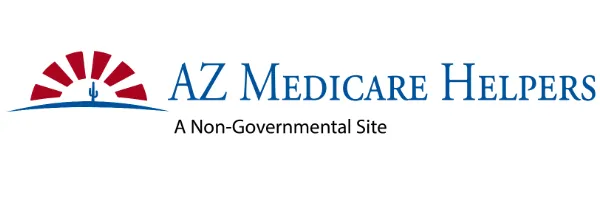Understanding Medicare
Medicare is a federal health insurance program designed primarily for individuals aged 65 and above. It's also accessible to some individuals under 65 who have disabilities, as well as those suffering from end-stage renal disease (ESRD)—a condition of permanent kidney failure that necessitates dialysis or a transplant. Medicare encompasses various segments that cater to distinct medical needs, including hospitalization, physician services, and prescription medications. For a detailed understanding of what Medicare Parts A, B, C, and D offer, continue reading below.

Part A
Hospital Insurance
Here are the key aspects of Medicare Part A coverage:
Inpatient Hospital Care: Covers the costs of a hospital stay, including a semi-private room, meals, general nursing, drugs as part of your inpatient treatment, and other hospital services and supplies.
Skilled Nursing Facility Care: Provides coverage for stays in skilled nursing facilities for rehabilitation purposes after a hospital stay, including room, board, and certain skilled care services.
Hospice Care: Covers services for people who are terminally ill and have chosen to receive palliative care instead of treatment for their illness. This includes support for pain relief, symptom management, emotional, and spiritual support.
Home Health Care: Offers limited home health services such as intermittent skilled nursing care, physical therapy, speech-language pathology services, and continued occupational services.
Part B
Medical (Outpatient) Insurance
Medicare Part B is another integral component of Medicare, the federal health insurance program in the United States. While Medicare Part A primarily covers hospital and inpatient services, Part B is focused on medically necessary outpatient care and preventive services. It is often referred to as medical insurance.
Here are the core aspects and services covered under Medicare Part B:
Doctors' Services: Consultations, outpatient services, and some doctor services you receive as an inpatient that Part A doesn’t cover.
Preventive Services: Health care to prevent illness (like the flu) or to detect it at an early stage, when treatment is most likely to work best, including certain vaccines, screenings, and tests.
Durable Medical Equipment (DME): Equipment like walkers, wheelchairs, or hospital beds used at home.
Outpatient Care: Medical or surgical services that do not require an overnight hospital stay.
Home Health Care: Limited, medically necessary, skilled care services and home health aide services.
Other Services and Supplies: This includes, but is not limited to, physical and occupational therapy, speech-language pathology services, and some ambulance services


Part C
Medicare Advantage Plans
Medicare Advantage is an alternative way for Medicare beneficiaries to receive their Medicare Part A and Part B coverage. Medicare Advantage plans are offered by private insurance companies.
Key Features of Medicare Part C:
Additional Coverage: Many Medicare Advantage plans offer extra coverage, such as vision, hearing, dental care, and wellness programs. Some plans also include Medicare Part D prescription drug coverage.
Out-of-Pocket Limits: Unlike Original Medicare, Medicare Advantage plans have an annual out-of-pocket spending limit for services covered under Part A and Part B. Once you reach this limit, you won't pay anything for covered services for the rest of the year.
Different Plan Types: There are several types of Medicare Advantage plans, including Health Maintenance Organization (HMO) plans, Preferred Provider Organization (PPO) plans, Private Fee-for-Service (PFFS) plans, Special Needs Plans (SNPs), and more, each with its own network rules and coverage specifics.
Costs: Costs for Medicare Advantage plans vary by plan, location, and provider. You typically pay a monthly premium (in addition to the Part B premium) and copayments or coinsurance for covered services.
Provider Networks: Most Medicare Advantage plans have a network of doctors, hospitals, and other healthcare providers. Depending on the plan type, services may be covered only if you use network providers. PPO plans allow for out-of-network services at a higher cost, whereas HMO plans typically require you to use network providers for covered care.
Prescription Drug Coverage: Many, but not all, Medicare Advantage plans include prescription drug coverage. If you choose a plan that doesn't offer drug coverage, you may have the option to join a separate Medicare Prescription Drug Plan (Part D).
Part D
Prescription Drug Coverage
Key Features of Medicare Part D:
Coverage: Medicare Part D plans cover a wide range of prescription drugs. Each plan has its own list of covered drugs, known as a formulary, which is divided into different tiers based on the cost of the drugs. The formulary includes both generic and brand-name drugs.
Costs: Costs for Part D plans vary and may include a monthly premium, annual deductible, copayments, and coinsurance. The exact costs depend on the specific plan, the drugs you use, and the pharmacy you choose. Some beneficiaries may qualify for Extra Help, a program to assist with prescription drug costs.
Enrollment: Enrollment in Medicare Part D is voluntary, and beneficiaries can sign up when they first become eligible for Medicare during their Initial Enrollment Period. There are also specific enrollment periods each year when beneficiaries can change their Part D plan, such as the Annual Election Period (October 15 to December 7) and the Medicare Advantage Open Enrollment Period (January 1 to March 31) for those enrolled in Medicare Advantage plans with drug coverage.
Late Enrollment Penalty: Beneficiaries who do not sign up for Part D when they are first eligible and do not have other creditable prescription drug coverage may face a late enrollment penalty if they choose to enroll in Part D later.

Medicare Supplement Plans
(Also known as "Medigap")
Original Medicare, Part A and B, pays for many of your health-care services and supplies, but it doesn’t pay for everything. That’s why you may want to consider getting a Medicare Supplement plan, also called Medigap. Unlike Original Medicare, a Medicare Supplement plan is offered through private insurance companies. These Medigap plans help pay some of the hospital and medical costs that Original Medicare doesn’t cover, such as copayments, coinsurance, and yearly deductibles.
Some Medicare Supplement plans also help pay for a few services that Original Medicare doesn’t cover, such as emergency overseas travel coverage or Part B excess charges. Two out of ten Medigap plans include a yearly out-of-pocket limit, which Original Medicare doesn’t include. Basically, a Medigap policy fills the “gaps” in Original Medicare coverage.

How do Medicare Supplement (Medigap) plans work with Medicare?
Medigap plans supplement your Original Medicare benefits, which is why these policies are also called Medicare Supplement plans. You’ll need to be enrolled in Original Medicare to be eligible for Medigap coverage, and you’ll need to stay enrolled in Original Medicare for your hospital and medical coverage. Medicare Supplement plans aren’t meant to provide stand-alone benefits.
Depending on the state that you live in, you may not be able to get Medicare Supplement coverage if you’re under 65 and have Medicare because of disability, end-stage renal disease, or amyotrophic lateral sclerosis. States aren’t required to offer Medigap coverage to beneficiaries under 65. If you’re under 65 and enrolled in Original Medicare, check with your state’s insurance department to find out if you’re eligible to enroll in a Medicare Supplement plan.
Keep in mind that Medigap plans don’t include prescription drug coverage (Part D), so if you want help with your medication costs, you’ll need to enroll in a stand-alone Medicare Prescription Drug Plan. Medigap insurance can only be used to cover costs in Original Medicare.
If you have Original Medicare and a Medicare Supplement plan, Original Medicare will pay first, and your Medigap policy will fill in the cost gaps. For example, suppose you have a $5,000 ambulance bill, and you have already met the yearly Medicare Part B deductible. Medicare Part B will pay 80% of your ambulance bill. If you have a Medicare Supplement plan that covers Part B copayments and coinsurance costs, then your Medigap policy would then pay the remaining 20% coinsurance of your $5,000 ambulance bill. Some Medicare Supplement plans may also cover the Part B deductible.
What types of coverage are not Medicare Supplement plans?
As a Medicare beneficiary, you may also be enrolled in other types of coverage, either through the Medicare program or other sources, such as an employer. When you first sign up for Original Medicare, you’ll fill out a form called the Initial Enrollment Questionnaire and be asked whether you have other types of insurance. It’s important to include all other types of coverage you have in this questionnaire. Medicare uses this information when deciding who pays first when you receive health-care services.
Below is a list of other types of insurance you may have. Please note that these types of coverage are different from Medicare Supplement plans:erwise specified.
Medicare Advantage plans (like an HMO or PPO)
Medicare Prescription Drug Plans (Part D)
Medicaid
Employer-or union-sponsored group coverage
TRICARE
Veterans' benefits
Long-term
Care insurance policies

Medicare Eligibility
Age
You are eligible for Medicare by age once you are 65 years or older. You will become eligible to enroll three months before your 65th birthday until three months after turning 65. This window is called the Initial Enrollment Period. You can apply for Original Medicare during this period if you are eligible. If you decide to delay your enrollment, you may face a late enrollment penalty whenever you decide to enroll in Medicare at a later time.
Disability
People who receive Social Security Disability benefits can qualify for Medicare once they have received benefits for 24 months. Individuals in this category become automatically eligible on the 25th month.
Health Condition
People suffering from End-Stage Renal Disease and Amyotrophic Lateral Sclerosis may become eligible for Medicare even when under 65. Those with kidney failure who need a transplant or frequent dialysis qualify for Medicare automatically. Medicare will begin coverage after the first dialysis.

Complete this form to be contacted by a licensed insurance agent for a telephonic or in-person appointment.
This is a solicitation for insurance. Submitting this form, you understand that your contact information will be provided to a licensed sales agent at Arizona Medicare Helpers, and only shared with Arizona Medicare Helpers agents, who can enroll you into a Medicare Advantage, Prescription Drug (Part D), and Medicare Supplement Insurance plans and you agree to receive automated marketing messages via email, auto dialer, text, or robocalls. Cellular charges may apply. Your consent to connect with a licensed insurance agent(s) does not impact eligibility to enroll or the provision of services. Call Arizona Medicare Helpers at 520-222-7997 to unsubscribe from this offer.
We do not offer every plan available in your area. Currently we represent 10 organizations which offer 72 products in your area. Please contact Medicare.gov, 1-800-MEDICARE, or your local State Health Insurance Program (SHIP) to get information on all of your options. Arizona Medicare Helpers represents Medicare Advantage [HMO, PPO and PFFS] organizations [and stand-alone PDP prescription drug plans] that have a Medicare contract. Enrollment depends on the plan’s contract renewal. A non-government entity powered by Arizona Medicare Helpers, a health insurance agency. PLEASE NOTE: Medicare Supplement insurance is available to those age 65 and older enrolled in Medicare Parts A and B and, in some states, to those under age 65 eligible for Medicare due to disability or End-Stage Renal disease.
The purpose of this communication is the solicitation of insurance. Contact will be made by an insurance agent/producer or insurance company. Medicare Supplement insurance plans are not connected with or endorsed by the U.S. government or the federal Medicare program.
© 2025 AZ Medicare Helpers | All Rights Reserved
MULTIPLAN_AZMH_WEB_2025_C

